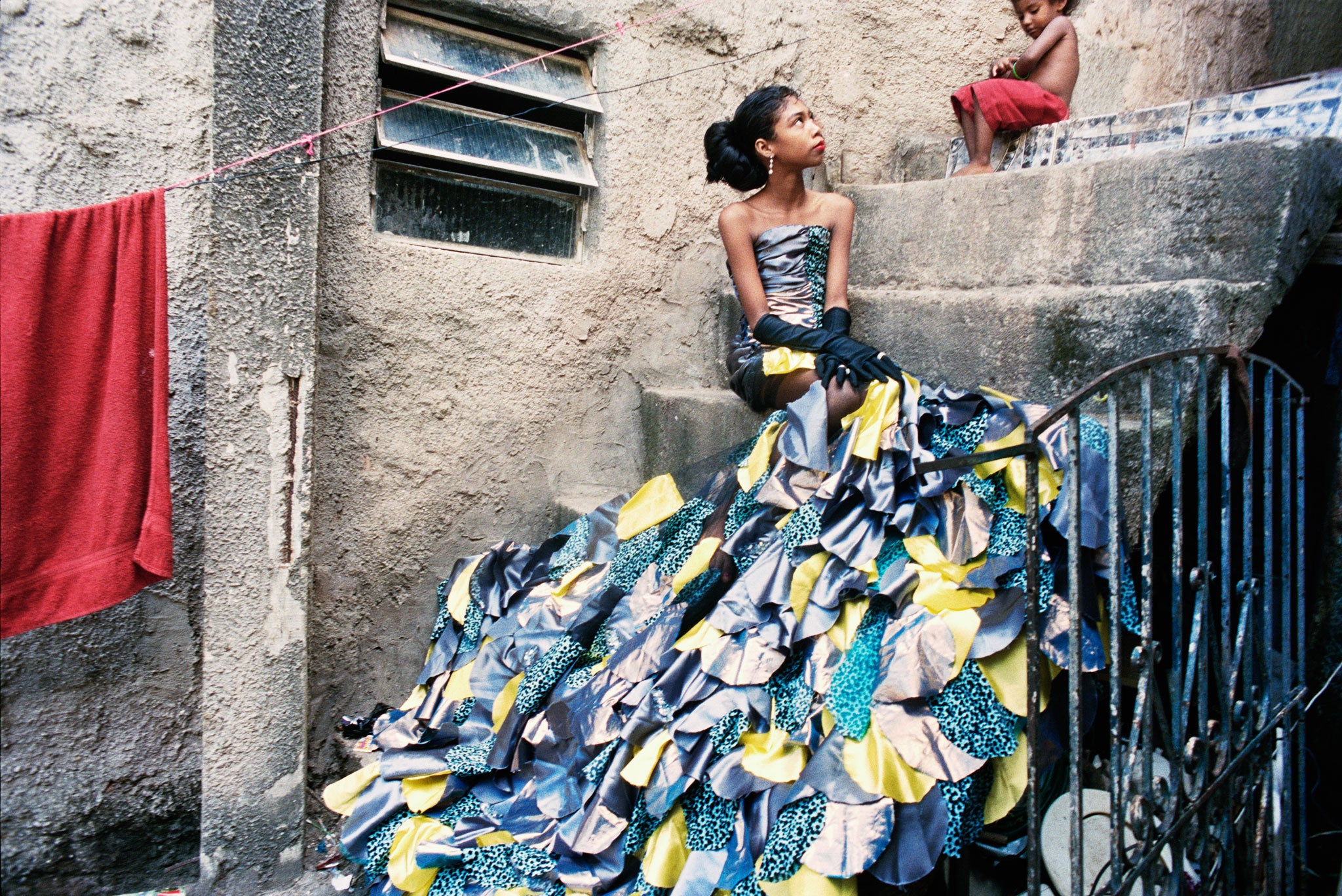Photographer Iris Della Roca makes the dreams of Rio's most deprived children come true
Movie stars and models, magicians and moneymen… they may be growing up in some of Rio's poorest districts, but nothing can dent these children's aspirations, as the photographer Iris Della Roca discovered

Photojournalism and well-meaning art projects about children in poverty tend, for obvious reasons, to be grim and gritty; hard-hitting and guilt-tripping. Iris Della Roca's series and accompanying exhibition – As the King is Not Humble, May the Humble be King! – is, therefore, a breath of fresh air.
Working with children from some of Rio de Janeiro's troubled favelas, the French photographer asked them how they wanted to be seen by others. They responded that they wanted to be photographed as princesses, fashion models and divas, Casanovas, cool dudes and kings. They didn't want to stare mournfully down the lens: they wanted to be fabulous.
The series stemmed from Della Roca's decision to take up residence in one of Rio's famously deprived and crime-ridden hillside enclaves; after she moved from Paris to the city in 2009, her life and work soon became bound up in the Favela da Rocinha.
"At first I started living in a favela because I wanted to know what it was like," the 29-year-old explains. "Then I met Tio Lino, the founder of the NGO Rocinha Mundo da Arte, and started working as a volunteer [on its art projects with children in the favela]. After a few months with the kids, there was a special bond and I proposed that I would take portraits of them the way they wanted to be seen. Each of the kids gave their idea, and I asked them to draw it, to visualise it, to make collages, using what they love and what inspires them. The portraits are a mix of [their] drawings and my own vision."
Some of the children – aged between five and 15 – brought Della Roca pictures straight out of magazines. It might seem a little depressing that kids living among crime and poverty just hanker after mass-media fame, fashion and wealth, but the photographer suggests that they were actually finding and blowing up big elements of their own personalities. These kids, evidently, had sass and style.
"Some of them came with a page from a fashion magazine and told me, 'That's how I want my picture.' And it's funny because the pictures are kind of an extension of their personality. The boy who chose to be a boss is a very bossy little man, the diva is a girl who looks at herself in the mirror every 10 seconds!"
The big frocks and glamorous poses, men's ties and plastic crowns all contrast with the backdrop – the crumbling buildings and corrugated roofs of Rio stretching away behind.
Della Roca never divorces the children from the environment that they live in. For the project isn't about escapist fantasy – it simply reveals these children to be as lively and excitable, as dreamy and ambitious, as any the world over, no matter their circumstances; no matter the usual stories of dour hardship we might impose on them.
"I like it because it represents the people triumphing over their living conditions, affirming who they are and not letting others do it for them," explains Della Roca. "In Brazil, like everywhere, the gap between the poor and the rich, the weak and the strong, is big. And the media stigmatises the favela and its inhabitants."
Of course, by allowing youngsters to mimic the grown-up poses of fashion rags, the images end up contrasting their youthful innocence with knowing, almost suggestive poses. The results are frequently rather comic, but given that we are on eternal high alert about the sexualisation of children, was Della Roca nervous about this?
Her answer is brief and dismissive. "No, because my work is sincere – and I don't find any of the pictures sexy at all."
She has continued the project back in Paris, working in the outer suburbs. How does conducting the project in a European capital compare to working in Rio? "The culture is very different; in the suburbs of Paris, the kids have all different religions and origins –African, Haitian, Indian, Syrian and so on – while in Rio they have the same culture and religion. But I think they are going through the same kind of discrimination and they have the same enthusiasm about doing the project – and the same ideas."
'As the King is Not Humble, May the Humble be King!' is at The Little Black Gallery, London SW10 (thelittleblackgallery.com), from 14 to 21 March
Subscribe to Independent Premium to bookmark this article
Want to bookmark your favourite articles and stories to read or reference later? Start your Independent Premium subscription today.

Join our commenting forum
Join thought-provoking conversations, follow other Independent readers and see their replies